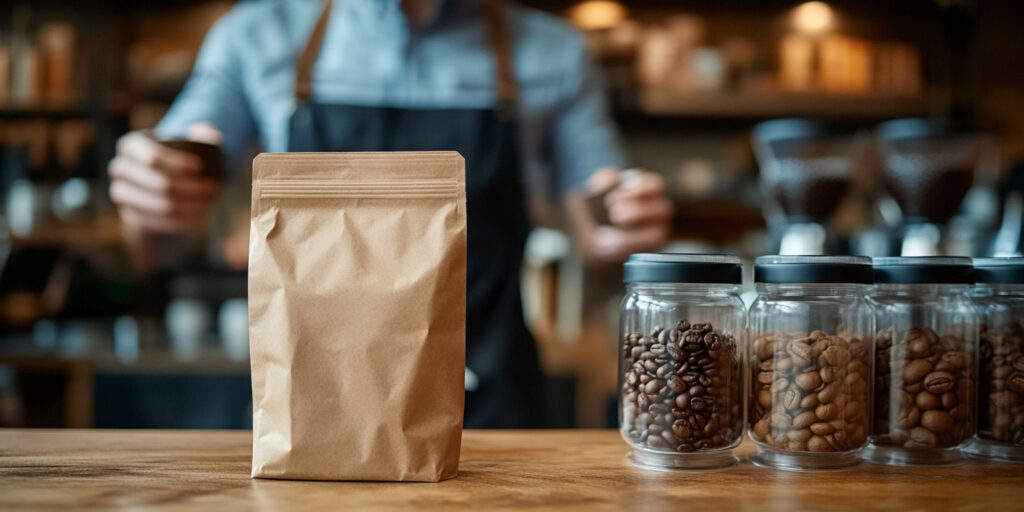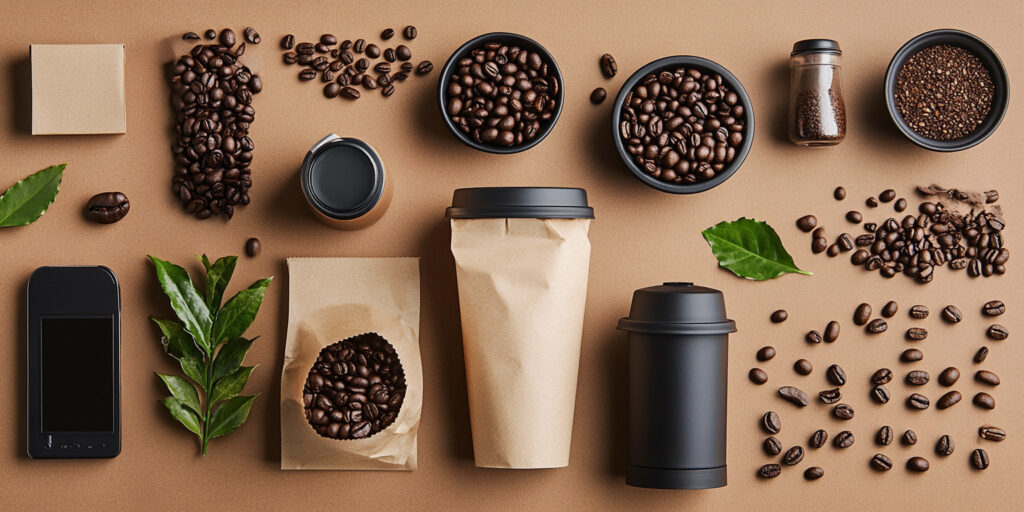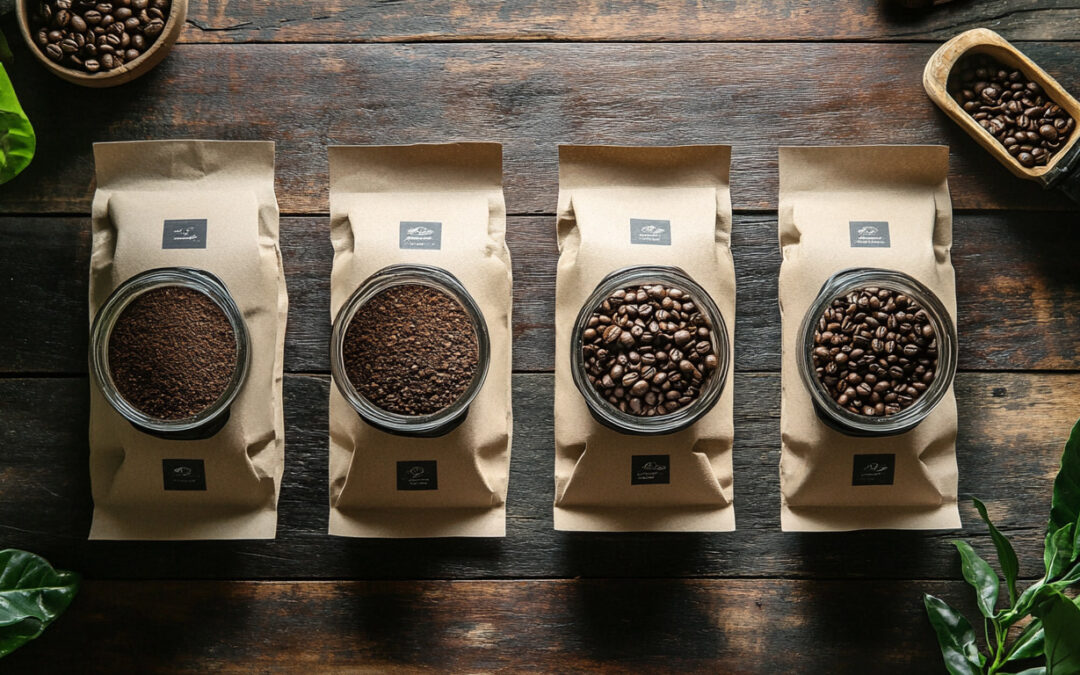Are you passionate about enjoying your morning coffee while also caring for the planet? Dive into the world of sustainable coffee packaging and discover how making eco-friendly choices can make a big difference. With concerns about environmental impact on the rise, it’s exciting to learn how modern coffee packaging is evolving to be more sustainable. Let’s explore how the right materials and practices can transform your coffee habits into a greener routine!
Sustainable coffee packaging focuses on reducing environmental impact through eco-friendly materials and practices. As coffee consumption grows, so does the need to address the waste generated from traditional packaging. This guide will highlight the main issues with coffee sustainability, explore the best materials for packaging, and introduce you to the 5 R’s of sustainable packaging. By understanding these aspects, you can make more informed choices and support a greener future for coffee lovers everywhere.
What are the main issues with coffee sustainability?
One of the biggest issues with coffee sustainability is the environmental impact of conventional packaging. Traditional coffee bags are often made from plastic and other materials that are not biodegradable, leading to increased waste in landfills. Additionally, the production and disposal of these materials contribute to pollution and greenhouse gas emissions. As the coffee industry grows, finding sustainable solutions for packaging is crucial to reducing its environmental footprint.
Sustainable Coffee Packaging Practices
Minimal Packaging
- Description: Using the least amount of packaging necessary to protect the coffee and ensure freshness.
- Benefits: Reduces waste; lowers the environmental impact; often more cost-effective.
Eco-friendly Inks and Adhesives
- Description: Utilizing inks and adhesives that are less harmful to the environment.
- Benefits: Reduces chemical pollution; often made from renewable resources.
Recycling Programs
- Description: Implementing or supporting programs that ensure coffee packaging is collected and properly recycled.
- Benefits: Increases recycling rates; helps close the loop on packaging materials.
Consumer Education
- Description: Educating consumers about the benefits of sustainable packaging and proper disposal methods.
What is the suitable material for packaging of coffee?
When it comes to suitable materials for coffee packaging, options like recyclable paper, compostable films, and biodegradable plastics are leading the way. Recyclable paper can be processed and reused, while compostable films break down into natural substances, minimizing landfill waste. Biodegradable plastics, though still a newer option, are designed to break down more quickly than traditional plastics. These materials help reduce the overall environmental impact of coffee packaging and support more sustainable practices.

Comparison of Coffee Packaging Materials
Recyclable Paper Bags
- Pros: Easy to recycle; biodegradable; less environmental impact if recycled properly.
- Cons: May not be as durable or moisture-resistant as plastic; can still contribute to waste if not recycled.
Compostable Films
- Pros: Breaks down into natural substances; reduces landfill waste; can be composted at home or industrial composting facilities.
- Cons: Compostable options may be less available and more expensive; requires proper composting conditions.
Biodegradable Plastics
- Pros: Designed to break down faster than traditional plastics; reduces plastic pollution over time.
- Cons: Can still contribute to microplastics if not disposed of properly; often requires specific conditions to degrade fully.
Reusable Containers
- Pros: Can be used multiple times; reduces single-use waste; often made from durable materials like glass or metal.
- Cons: Higher initial cost; requires proper cleaning and maintenance; may not be as convenient for all consumers.
Bulk Packaging
- Pros: Reduces overall packaging waste; often uses minimal or no packaging; cost-effective for consumers.
- Cons: Requires proper storage to maintain freshness; may not be suitable for all retail environments.
What are the 5 R’s of sustainable packaging?
The 5 R’s of sustainable packaging are: Reduce, Reuse, Recycle, Rot, and Rethink. Reduce means cutting down on the amount of packaging used in the first place. Reuse involves finding new ways to use packaging materials rather than throwing them away. Recycle refers to processing used materials into new products. Rot focuses on using compostable materials that break down naturally. Rethink is about considering the environmental impact of the packaging choices we make and opting for better alternatives.

By applying the 5 R’s, coffee brands and consumers can significantly contribute to a more sustainable coffee industry. For example, choosing coffee brands that use compostable bags and opting for bulk purchases with minimal packaging can make a big difference. Supporting companies that prioritize eco-friendly practices helps drive the industry towards more sustainable solutions and reduces overall waste.
In conclusion, sustainable coffee packaging is about making informed choices that benefit both your coffee routine and the planet. Understanding the main issues with coffee sustainability, selecting suitable materials, and following the 5 R’s can lead to more eco-friendly coffee consumption. As awareness grows and more brands adopt sustainable practices, we can all enjoy our favorite beverage while contributing to a healthier environment.
Read More On: How Ethical Coffee Sourcing Uplifts Farming Communities

